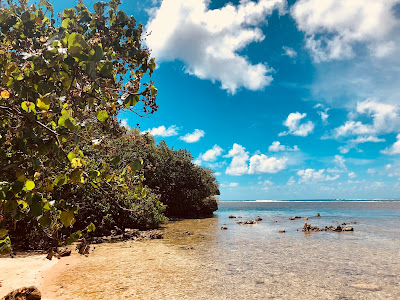Many Nenis
For the past few months my Saturday morning Chamoru coffee shop classes have been structured around two activities. Each class begins with the translation of a Chamoru song into English. Usually the students get to the pick the particular song, or at least the type of song. Second, we go through a longer narrative, sometimes a story, a speech or a poem in Chamoru and also spend time translating it and practicing reading it. As a result of this, I've been translating lots of Chamoru songs lately. When I first started learning Chamoru, gi minagahet, I was terrible at transcribing Chamoru songs. I hadn't grown up with the ear for hearing or catching Chamoru and so my transcriptions of songs were often wildly inaccurate. For the first few years I had people both politely and impolitely correct my attempts at transcription and then translation. My ear for Chamoru has gotten better, but I still struggle sometimes with particular artists who may have their own flair for pronunciat

